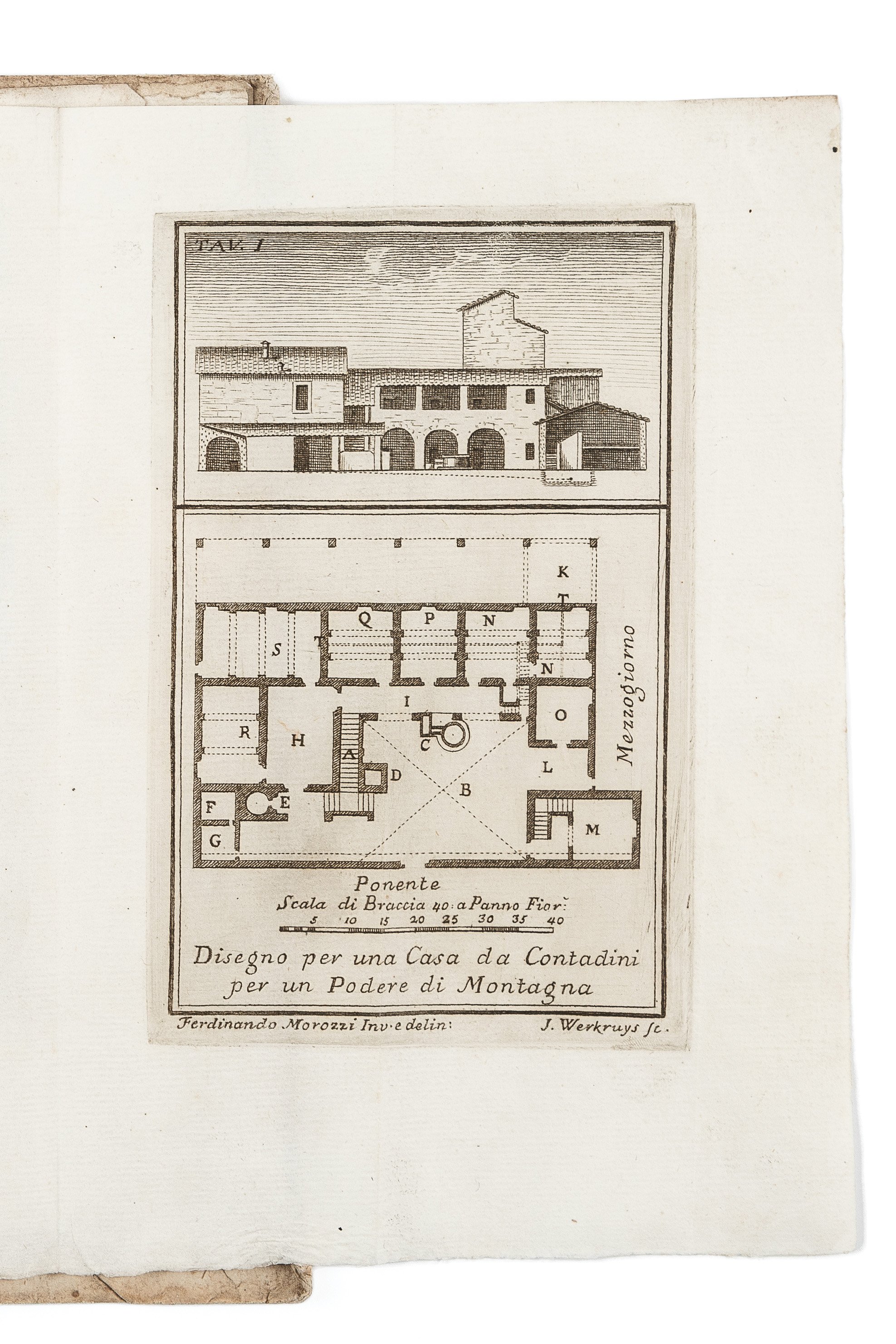Morozzi, Ferdinando (1723-1785). Delle case de’ contadini trattato architettonico di Ferdinando Morozzi nobile colligiano. Florence, Gaetano Cambiagi, 1770.
Morozzi, Ferdinando (1723-1785). Delle case de’ contadini trattato architettonico di Ferdinando Morozzi nobile colligiano. Florence, Gaetano Cambiagi, 1770.
Morozzi, Ferdinando (1723-1785).
Delle case de’ contadini trattato architettonico di Ferdinando Morozzi nobile colligiano.
Florence, Gaetano Cambiagi, 1770.
Tuscany’s rural landscape
Morozzi, Ferdinando (1723-1785).
Delle case de’ contadini trattato architettonico di Ferdinando Morozzi nobile colligiano. Florence, Gaetano Cambiagi, 1770.
8° (218x143 mm). vi, 87, [1] pages. Three engraved folding plates. Woodcut ornament on the title-page. Contemporary boards ‘alla rustica’, inked title on the spine; covers water stained. A very good copy, some foxing, upper inner corner of the title-page slightly soiled.
First edition of this influential practical manual for building farmhouses by the most ingenious Italian geographer, cartographer and architect of the second half of the eighteenth century.
The Sienese Ferdinando Morozzi is remembered above all for two major projects to which he dedicated his life: the construction of a large cartographic atlas of Tuscany, and the realization of a large map of the grand duchy. His activity was, however, much wider, expanding to city planning and hydraulics, and from architecture to the resolution of problems in public space, as with his remedial efforts in Florence between 1761 and 1765 to protect the city from the flooding of the Arno river, as described in the treatise Dello stato antico e moderno del Fiume Arno e delle cause e dei rimedi dalla sue inondazioni (Florence, Giovanni Battista Stecchi, 1762-1766).
The writing of the Delle case de’ contadini aligns with the cultural and social spirit of Tuscany under Pietro Leopoldo I (1747-1792), which aimed at bringing attention to land use and agricultural economics. In 1753, Florence’s Georgofili Academy was founded to improve Tuscan agriculture. Pietro Leopoldo I made it a public institution, entrusting the organization with important missions. In 1766, the Grand Duke requested the first investigation into the conditions of agricultural land use, the most rewarding result of which was this treatise on rural architecture by the remarkable georgofilo Morozzi.
In keeping with contemporary enlightenment thought, Morozzi states in the introduction his objective of improving farmhouses not for the sake of luxury, but rather to benefit the wellness of farmers, which in turn would result in increased agricultural production. The Georgofili’s primary concerns of efficiency and salubrity are thus made manifest in Morozzi’s subsequent reconsideration of the casa colonica (i.e., farmhouse) in terms of the most thoughtful and effectual use of space. Morozzi’s treatise was in constant reference for the building of farmhouses in the following centuries, and his directives did much to shape the representative elements of Tuscany’s rural landscape.
G. Orefice, Ferdinando Morozzi architetto e ingegnere toscano 1723-1785, Firenze 1988; A. Guarducci, Cartografie e riforme. Ferdinando Morozzi e i documenti dell’Archivio di Stato di Siena, Borgo san Lorenzo [2008], pp. 13-16.

